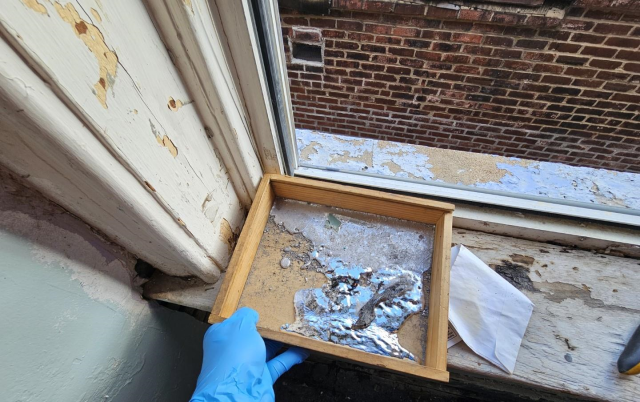EPA Completes Mercury Removal Action in St. Louis
LENEXA, KAN. (JUNE 12, 2025) – U.S. Environmental Protection Agency (EPA) completed cleanup of a residence in St. Louis, Missouri, after a container of elemental mercury was spilled.
The Missouri Department of Natural Resources alerted EPA that a mercury spill had occurred at a residence on May 20, 2025. EPA deployed to the scene that day to perform an assessment. An EPA federal on-scene coordinator confirmed the presence of liquid elemental mercury, both inside and outside of the home. Mercury vapor levels inside the residence were found to exceed the indoor air residential removal action goals and presented a health risk to the residents.
EPA completed emergency removal action to address the release of elemental mercury that was causing the mercury vapor concentrations in the home. Removal actions included:
- Utilizing specialized mercury removal equipment to remove liquid elemental mercury that had been spilled inside and outside the residence.
- Assessing and removing contaminated personal belongings, flooring, and bulk items.
- Heating and ventilating the building.
- Painting, sealing, and replacing flooring that required removal due to contamination.
- Regular screening of mercury vapor concentrations with portable, mercury vapor analyzers.
Mercury is extremely difficult to clean up. Once spilled, mercury beads can scatter and settle into cracks in the floor and beneath baseboards. Additionally, it is very tough to get mercury out of clothes, furniture, carpet, and other porous items. Individuals should avoid using household items such as mops, paper towels, towels, or vacuums for cleanup, as these can often spread mercury and increase mercury vapors.
While small spills — such as those from a vintage, mercury-filled fever thermometer — can be managed with proper care, in most cases, individuals without proper training and equipment worsen the situation and put themselves at significant risk for exposure to mercury and mercury vapors.
Mercury can impact people’s health in a variety of ways and depends on several factors such as: form of mercury; amount of mercury; age of the person exposed; how long the exposure lasts; how the person is exposed; and health of the person exposed.
Symptoms of prolonged exposure to elemental mercury include:
- Headaches
- Insomnia
- Tremors
- Disturbances in sensations
- Emotional changes (such as mood swings and irritability)
- Neuromuscular changes
- Poor performance on tests of mental function
High exposures to mercury can impact kidneys, cause respiratory failure, and in extreme cases, can lead to death.
Anyone with concerns about mercury exposure should consult their primary care physician and/or the Poison Control Center at 1-800-222-1222.
Residents of St. Louis, St. Louis County, and Jefferson County can dispose of unwanted hazardous waste, including mercury and mercury-containing devices (such as thermometers, thermostats, and mercuric salts), at St. Louis Hazardous Waste. The first 50 pounds of waste are subsidized.
# # #
Learn more about EPA Region 7
View all Region 7 news releases
Visit the Region 7 Media page
Connect with EPA Region 7 on Facebook and Instagram
Follow us on X: @EPARegion7

